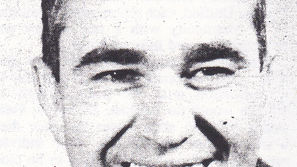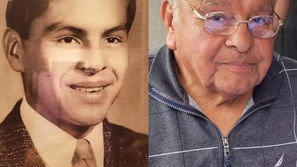Fred Nix saved a field
- Bill Coate
- May 4, 2022
- 4 min read

For The Madera Tribune
James Monroe students explore the Borden Chinese Cemetery in 1992.
It was raining on that day in January 1992 when we took the kids to see the Borden Chinese Cemetery on Avenue 12. Dodging the mud puddles, we went from tombstone to tombstone looking at the Chinese characters on top of each marker. Then we walked over to the red altar and wondered about this field and what tales these tombstones held. Piqued by our curiosity, we went across the street to the headquarters of the Madera Irrigation District to see if they had any information on this forgotten field and its forgotten people.
Our first question was, who owned the property? An MID employee pulled out a huge book and turned to a map of the cemetery. That’s when we learned that the Jung Wo Company was the last recorded owner, but the record showed that organization to be defunct. This led to our next question. Who pays the taxes on that eight-tenths of an acre? The response spurred our curiosity even further.
“Frankly, Mr. Coate,” the man said as he closed the book, “Every year at tax time, we just wish that field would go away.”
Before he put the book away, he gave us the parcel number, and we departed, determined to satisfy the feeling that there was something mysterious going on with this cemetery. The seven students from my sixth grade class at James Monroe School got back in the school van and we headed for the County Government Center. We wanted to talk to assessor Dick Gordon.
We gave Gordon the parcel number and posed the same question. Who pays the taxes on the Borden Chinese Cemetery? He reached into his records and pulled out a card with names on it. He looked at it and then turned it over. On the reverse side, written in pencil were the words, “dead people.” Gordon showed us the card and then informed us that Madera County did not tax that field but Madera Irrigation District did.
Before we took the kids home that day, we made one more call, this one to the manager of the Madera Cemetery District. We wanted to know why MID was taxing the Borden Chinese Cemetery and Madera County did not. She surprised us by saying that it was not a cemetery. By that she meant the Borden Chinese Cemetery was not in her jurisdiction and therefore was not an officially recognized cemetery.
With that, our initial inquiry into the history of the cemetery on Avenue 12 came to an unsatisfactory end. The field held the remains of at least seven bodies. They were buried under markers on which were inscribed Chinese characters which presumably identified the deceased. The existence of the altar told us that it had at one time been considered to be a sacred site. We found out that the Madera Irrigation taxed the owners of the field, notwithstanding the fact that their organization no longer existed. We also discovered that the county refused to tax the property and that the Cemetery District didn’t consider it to be a cemetery. It all pointed to the need for more sleuthing, but we had hit a stone wall. We needed some luck; we needed the break that came when Fred Nix called me that night.
Fred had been an employee of MID for several years, and learning that we had been asking about the Chinese Cemetery, he had some blockbuster news for us. Fred said that MID was going to sell the Borden Chinese Cemetery for back taxes in August. This of course set off a firestorm of conversation the next day. All four of James Monroe’s sixth grade classes met in the cafeteria and committed themselves to saving the historic graveyard. The plan called for the students to raise enough money to pay the back taxes. Someone told us that the number 9 was significant in Chinese culture, so it was decided that the kids would start bringing pennies to school, nine at a time. If 120 students did that every day, by August, they would have enough to save the cemetery.
In a day or two, the student project to save the field became public and the media were notified. Everyone seemed pleased except one fellow at MID. We were notified that the district would not accept any money from the students. This was confirmed by Fred Nix when he gave this writer an interoffice memo warning in part, “if we take money from the students they will be the heroes, and we will be the bad guys.” (This writer still has that memo in his possession.)
Now the fat was in the fire. There would be no turning back. The James Monroe students would turn the Chinese cemetery story into a Madera Method project.
Next time we will tell how those revelations by Fred Nix made it to page six in the first section of the New York Times and all the way to China.


























Comments